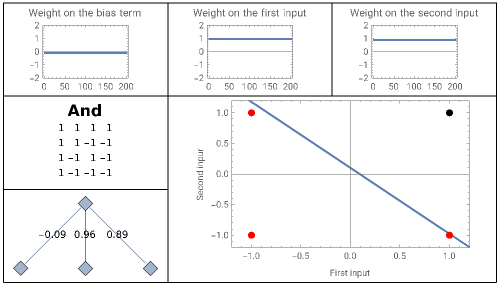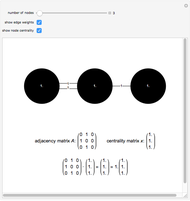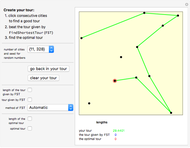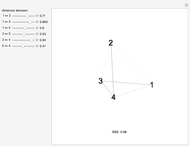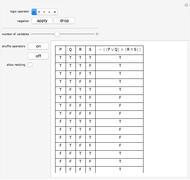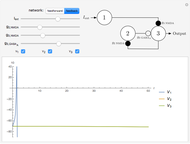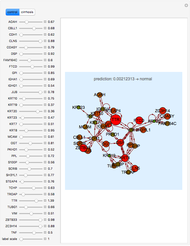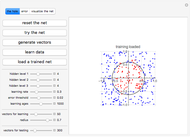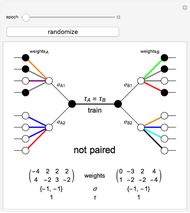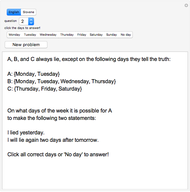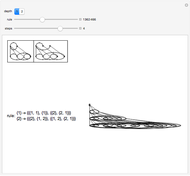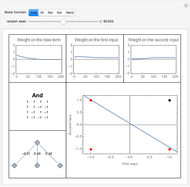Neural Network for a Basic Truth Table

Requires a Wolfram Notebook System
Interact on desktop, mobile and cloud with the free Wolfram Player or other Wolfram Language products.
This Demonstration shows a very basic artificial neural network (ANN) capable of simulating different logical operators. Exclusive OR (XOR) cannot be simulated.
Contributed by: Alexander Isakov (July 2011)
Open content licensed under CC BY-NC-SA
Snapshots
Details
This is a single-layer neural network with three input neurons and the Sign activation function. The set of inputs includes bias, which always fires one and two input variables. The learning starts from random weights on the inputs. Then the row (pattern) from the truth table is chosen at random. If the output of the network is correct then the weights are not adjusted.
In case the output does not match the true value, the weights are corrected according to the following rule:  , where
, where  is the learning rate,
is the learning rate,  is the input,
is the input,  is the input's weight, the
is the input's weight, the  output is given by the network, and
output is given by the network, and  is the true output of the logical operator given the supplied input set.
is the true output of the logical operator given the supplied input set.
The cycles start again and another pattern is chosen. There is no convergence criterion and a stopping rule of two hundred iterations is used.
The process of convergence of the weights on the inputs is shown at the top. The bottom-right graph illustrates a hyperplane where red and black dots are used to mark false and true statements, respectively. The line separates red and black dots, thus showing that the weights are estimated correctly (except in case of XOR).
Also, the truth table is shown, adding the first column, which is a bias term, while the last column is an output of the logical operator applied to two inputs.
The bottom-left graph provides the structure of the network with the estimates of the weights.
For more information, see Colin Fyfe, Artificial Neural Networks and Information Theory, The University of Paisley: Department of Computing and Information Systems, 2000.
Permanent Citation
"Neural Network for a Basic Truth Table"
http://demonstrations.wolfram.com/NeuralNetworkForABasicTruthTable/
Wolfram Demonstrations Project
Published: July 1 2011
